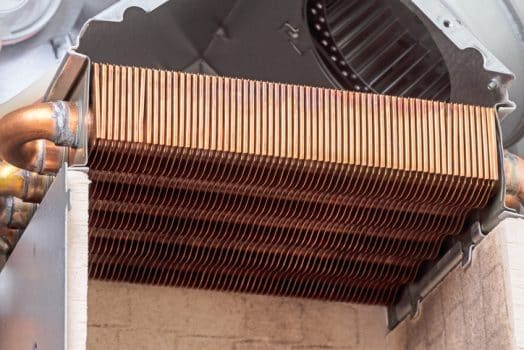How does a tankless water heater work
It seems like magic—a source of on-demand, endless hot water, without a large tank or bulky set-up. Dispelling the mysteries behind tankless hot water heating systems—also known as on-demand water heaters—requires working backward a bit, summarizing the more commonly understood water heating system for homes, the tank system. Traditionally, hot water is dispensed by a storage tank system, where a large gallon tank—usually 40–50 gallons—is filled, and energy is pumped into the tank to heat water, creating essentially a large kettle where a household is able to draw hot water. When the tank is empty, the hot water is out, until the tank is able to refill, and the water can be heated. The standard tank system uses either electric or gas burners to heat the tank continuously, leading to high amounts of standby heat loss, and water usage waste.
A tankless water heater eliminates the middle-man that is the bulky tank and improves on the heating system as a whole. The entire tankless hot water heating system is directly connected to the cold-water supply line. The system draws in cold water when a flow sensor—a sensor designed to detect water flow—is triggered by the activation of a hot water tap. The flow sensor immediately sends a signal to the tankless water heater’s control panel to begin producing hot water. The resulting steps, then, happen almost instantaneously—or, in other words, this is where the magic happens.

As the signal is received by the control panel for hot water, cold water is let into the system, making its way to the heat exchanger. A heat exchanger transfers heat from one source—for tankless water heaters, that’s either electric coils or a gas burner—into a second source. Regulated by the control panel, the heat exchanger is able to heat the water up to the desired temperature before it reaches the tap. If the temperature is not correct, there is a temperature sensor reading whether the outgoing water is too hot, or not hot enough, and exactly how much the temperature should be adjusted, before sending a signal back to the control panel to adjust accordingly.
Generally, tankless water heating systems have closed, separate, sealed ventilation systems to vent exhaust fumes outside of the home. Overall, even with the vents, a tankless water heater is significantly smaller than other water heating systems for homes, coming in just around the size of a standard piece of carry-on luggage. Further adding to their compact nature, tankless water heaters are mounted to walls, or, if they’re small enough, within cabinets or under sinks.
By only using heating water when the tap is opened, tankless water heaters dramatically reduce overall water waste and are able to curb energy usage as well. If a tankless water heating system sounds like an upgrade you’d like to see in your home, give Duane Blanton Plumbing a call at (815) 781-2567, or contact us online to find the best way to upgrade your current home water heating system.


